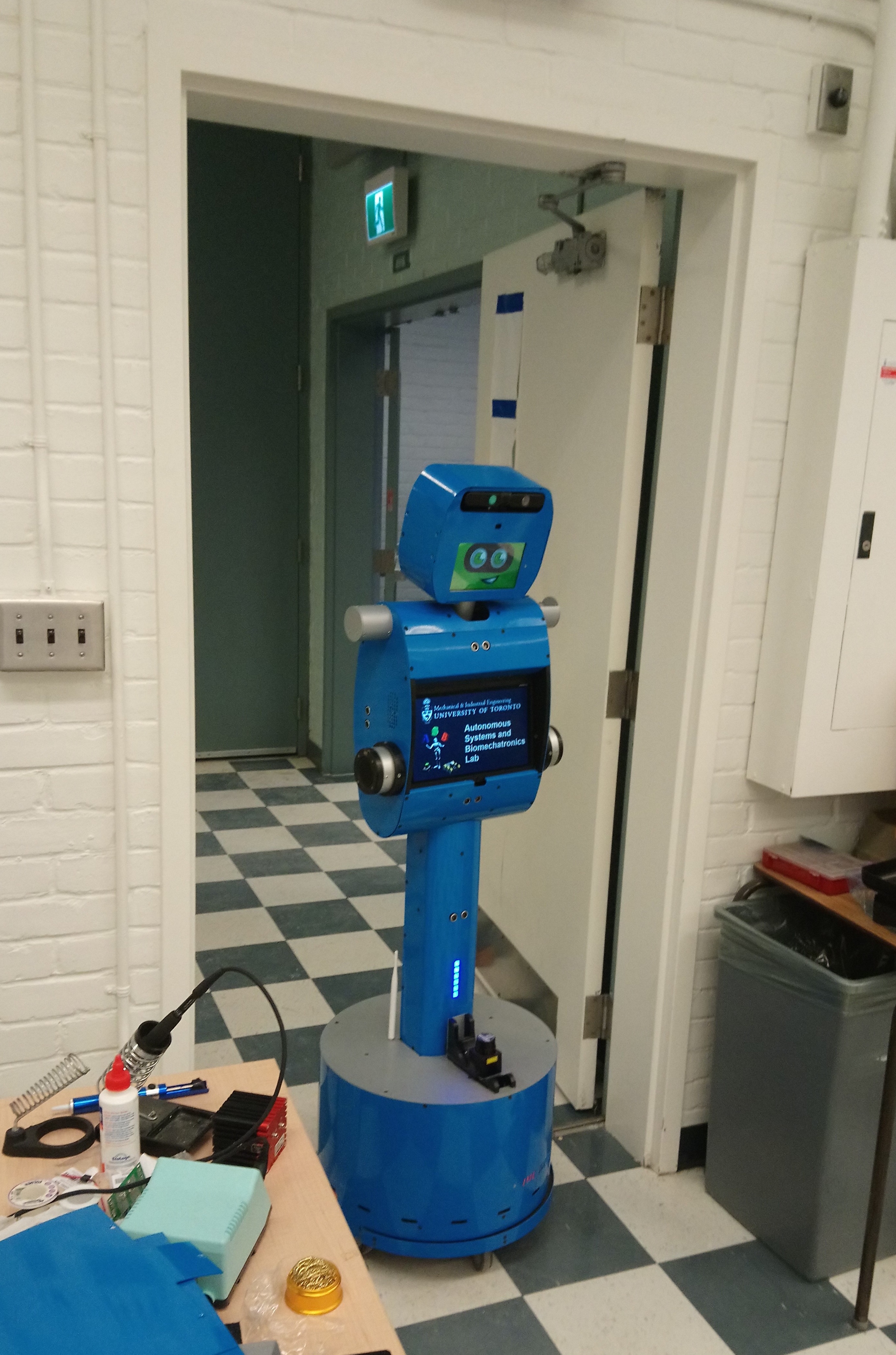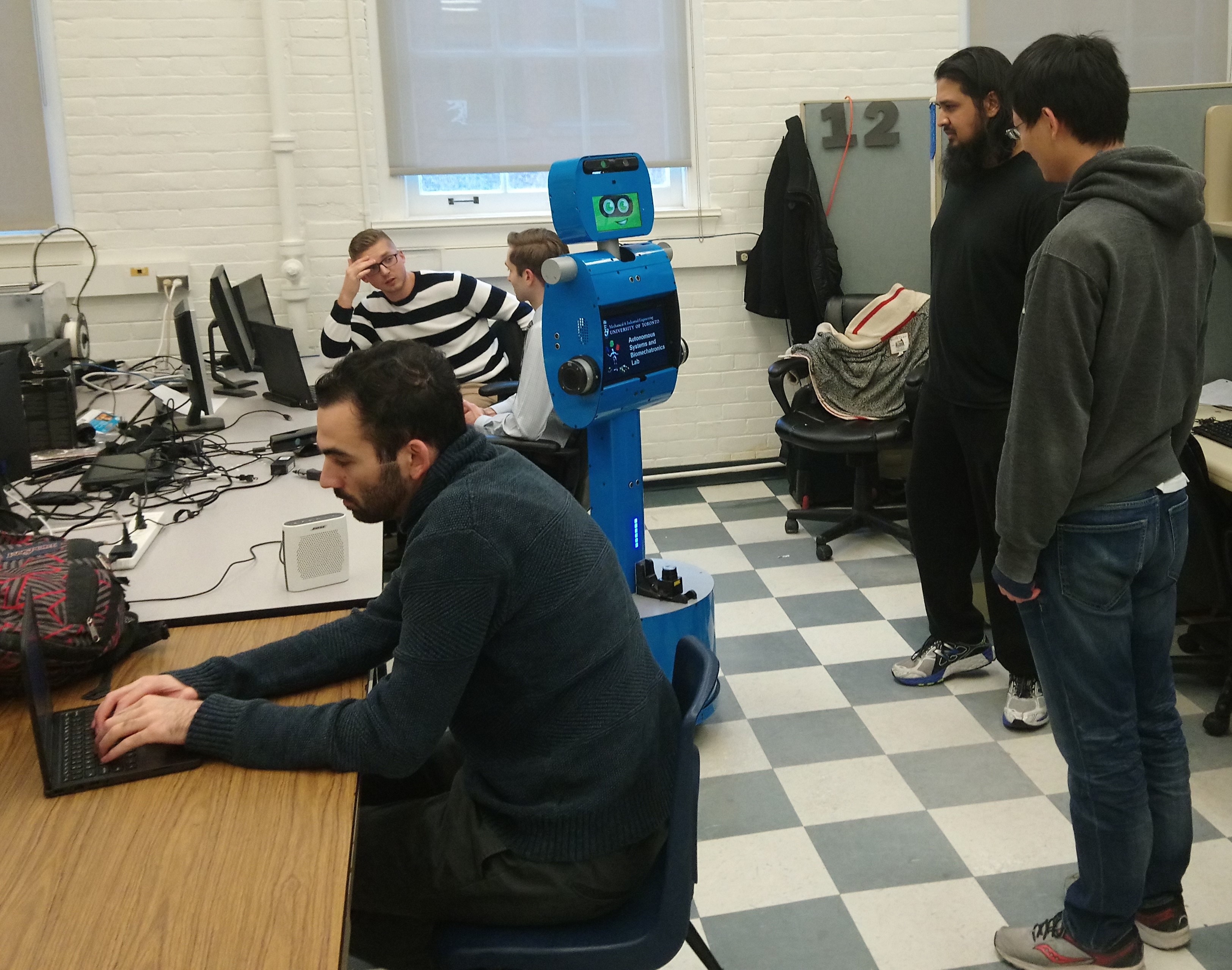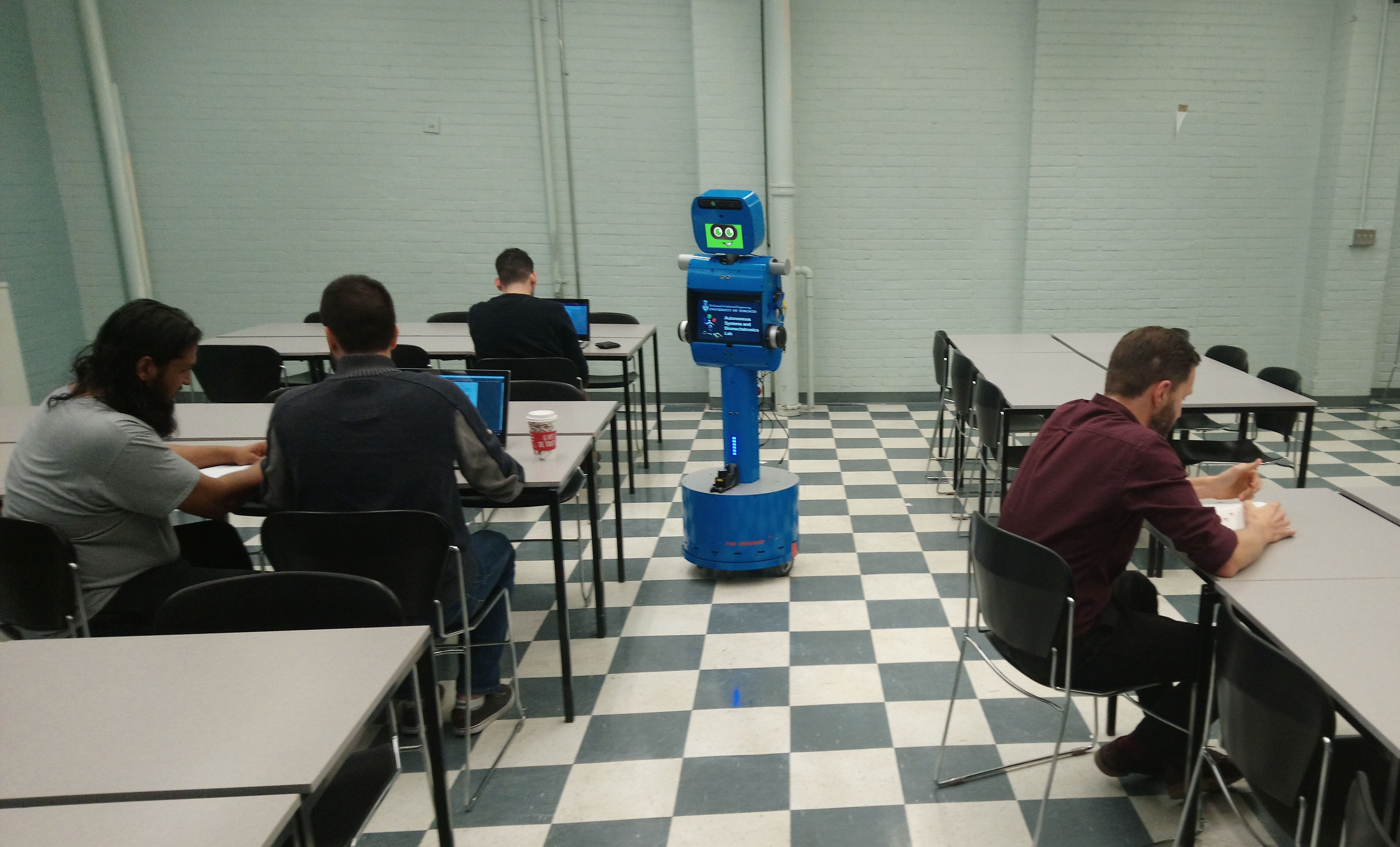University of Toronto |Faculty of Applied Science and Engineering |webmaster
All contents copyright © Autonomous Systems and Biomechatronics Lab.
Person Search in Human-Centered Environments
This research focuses on the development of socially assistive robots which can find and assist users who are not initially co-located with the robots. The environments considered include: 1) houses in which a single elderly resident may live alone, as well as 2) large buildings such as long-term care facilities in which multiple elderly users may reside.
Single-User Robot Search in Human-Centered Environments
There is an increasing population of people living with dementia. In the later stages of dementia, these individuals may lose the ability to perform activities of daily living and become more dependent on family members and healthcare providers. Therefore, there is a demand for socially assistive robots to help seniors with activities of daily living at home and improve their quality of life.
These robots are expected to perform tasks such as providing instructions on activities of daily living (e.g.. teaching user how to prepare a meal), giving reminders (for eating a meal, taking medications, going to a doctor's appointment etc.), and allow the user to communicate with family members or healthcare providers through telepresence. In these scenarios, the robot often have to find the user first before initiating a social interaction, thus justifying the need for a person search strategy. The significance of developing an efficient person search technique is that it allows the robot to find the user in a timely manner, reduce power consumption of the robot and increase the user's perceived intelligence of the robot.
User Data:
http://asblab.mie.utoronto.ca/sites/default/files/User_pattern_data_0.zip
Videos:
Published In:
S. Lin, and G. Nejat, “Robot Evidence Based Search for a Dynamic User in an Indoor Environment,” ASME International Design Engineering Technical Conferences & Computers and Information in Engineering Conference, 2018. (pdf)
Funding Sources:
This work was funded by the Natural Sciences and Engineering Research Council of Canada, the Ontario Centres of Excellence, the Canada Research Chairs Program, and CrossWing Inc.
Multi-User Robot Search in Human-Centered Environments

A rapidly aging demographic is putting increased strain on families, long-term care providers, and the healthcare system. This includes in retirement homes and long term care facilities, where staff can feel overworked. To address this problem, we are investigating the use of socially assistive robots for assisting with non-contact medial/repetitive tasks. Example tasks include: 1) reminders, 2) telepresence, and 3) recreational activities (e.g.. Bingo and Trivia). However, in order to initiate the majority of such tasks, the residents and robot are not necessarily co-located within the environment. As a result, the robot must be able to perform searches for a single person or a group of multiple people at various times through out the day.
For our multi-user robot search in human-centered environments, a robot is required to look for multiple users within a specific time frame. The search objective is to have the robot implement a search plan which maximizes the expected number of target persons found. The approach to this problem can be decomposed into 3 sub-problems: 1) model the user behaviors, 2) generate a robot search plan based on user behaviors, and 3) implement and execute the plan on a robot.
Modeling the user behaviors must consider both the spatial and temporal location probabilities of the users. In our research we relate the user spatial temporal location probabilities to the activities which the users perform in the environment. Simulated user data, based on real-world long-term care schedules, have been used to conduct experiments. This data can be found below, under User Activity Data and Maps.


Generating robot search plans based on user spatial temporal models requires the planner to consider the current location of the robot, as well as all previously searched locations. For a variety of planning approaches, generating a plan quickly becomes computationally expensive and cannot be performed in real time. As a result, to generate plans in real-time, it is often the case where the optimal solution must be approximated, in which case we decompose the problem into sub-problems. This is discussed in more detail in our published works which can be found below, under Published In.
Implementation and execution requires the robot to navigate efficiently and safely within the human-centered environment, as well as use vision processing technique to identify people in the environment. As people in the environment will be facing various directions relative to the robot as it moves within the environment, the robot must be capable of detecting a person from any direction, determining the front of the user, and then moving to the front of the user to determine their identity based on their face.
The overall search problem and its 3 sub-problems are discussed in detail in our published works which can be found below, under Published In.
User Activity Data and Maps:
http://asblab.mie.utoronto.ca/sites/default/files/User_Activity_Data_and...
Videos:
Published In:
1. S. Mohamed and G. Nejat, “Autonomous Search by a Socially Assistive Robot in a Residential Care Environment for Multiple Elderly Users Using Group Activity Preferences” International Conference on Automated Planning and Scheduling (ICAPS) Workshop on Planning and Robotics, 2016. (DOI)
2. K. E. C. Booth, S. C. Mohamed, S. Rajaratnam, G. Nejat, and J. C. Beck, “Robots in Retirement Homes: Person Search and Task Planning for a Group of Residents by a Team of Assistive Robots,” IEEE Intelligent Systems, vol. 32, iss. 6, pp. 14-21, 2017. (pdf)
3. Person Finding: An Autonomous Robot Search Method for Finding Multiple Dynamic Users in Human-Centered Environments. (under review)
Funding Sources:
This work was supported by the Natural Sciences and Engineering Research Council of Canada (NSERC), Dr. Robot Inc., the Ontario Centres of Excellence (OCE), the Canadian Consortium on Neurodegeneration in Aging (CCNA), and the Canada Research Chairs program (CRC).

